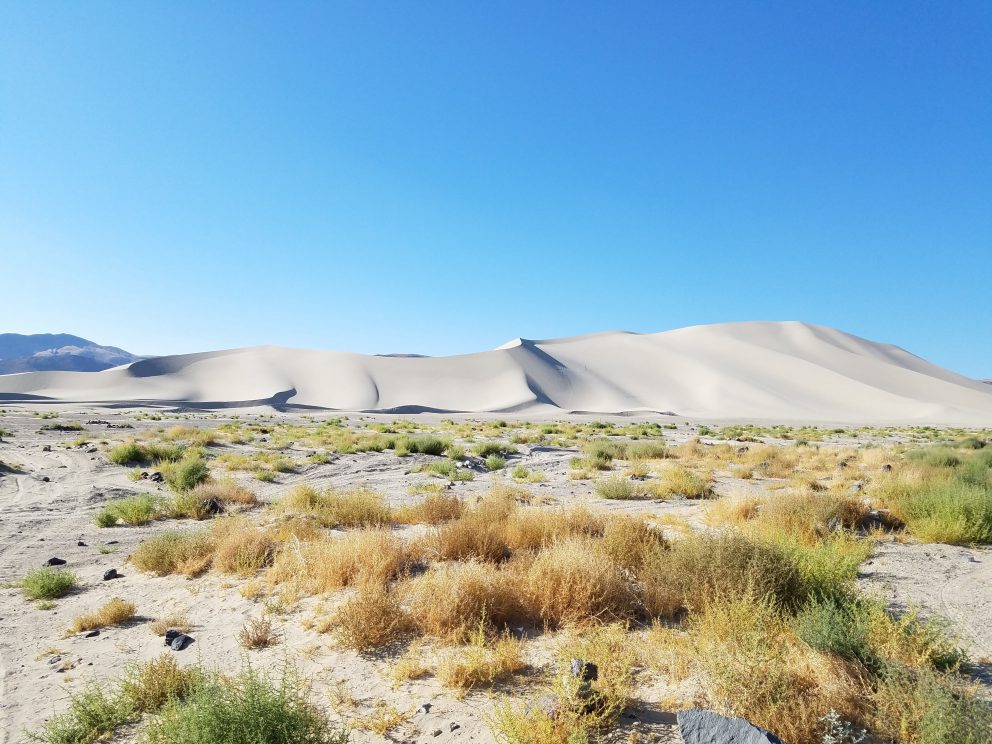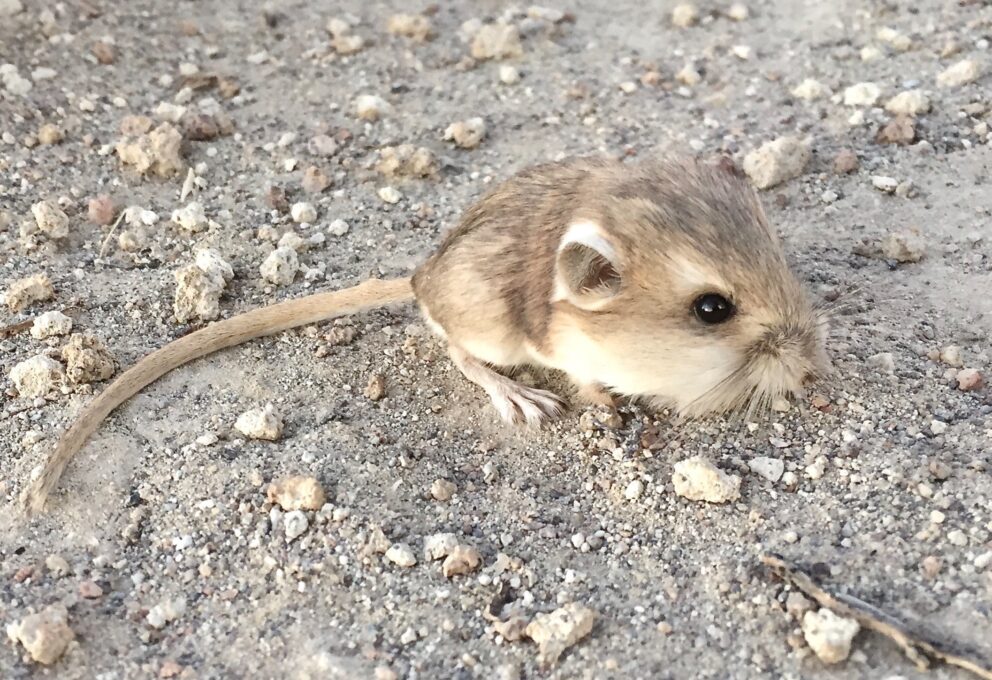- SCIENTIFIC NAME
- Microdipodops megacephalus
- CLASSIFICATION
- Mammal
- LIFE SPAN
- 1-5 Years
- SIZE
- 2.8-2.9” | 0.02-0.04lbs
- STATE CONSERVATION STATUS
-
- State Protected
- FEDERAL CONSERVATION STATUS
- Least Concern
- GAME STATUS
- Non-Game
- GAME TYPE
- None
- Washoe
- Humboldt
- Pershing
- Churchill
- Mineral
- Lyon
- Douglas
- Carson City
- Storey
- Elko
- Lander
- Eureka
- White Pine
- Esmeralda
- Nye
- Lincoln
- Clark
Habitat & Range
Dark Kangaroo Mice inhabit dry desert areas with lots of loose sand and gravel; especially the Great Basin in Nevada and sand dunes between 4000 and 6800 feet. They create underground systems throughout the sand dunes that protects them from extreme temperatures and predators.
Threats
- Habitat Loss
- Invasive Species
- Predation
Natural History
The Dark Kangaroo Mouse will live most of its life in burrows and emerge shortly after sunset to forage. Seeds are their primary source of food so they are known as “granivores,” but they will occasionally eat insects. They will forage by scratching and digging at sandy soil to expose seeds. They will collect the seeds in external cheek pouches to hoard for the winter months in their burrows. These mice are thought to have multiple litters per season, although their breeding habits are not well known. The average number of offspring is around four per litter but could be as high as seven or eight pups per litter. The breeding season spans from March to October. Being a smaller, ground-dwelling rodent makes the dark kangaroo mouse susceptible to predators. Common predators are foxes, badgers, owls, and rattlesnakes. Their dark coloring helps to camouflage them from predators as well their complex underground burrows can help them escape potential predators.
Fun Facts














